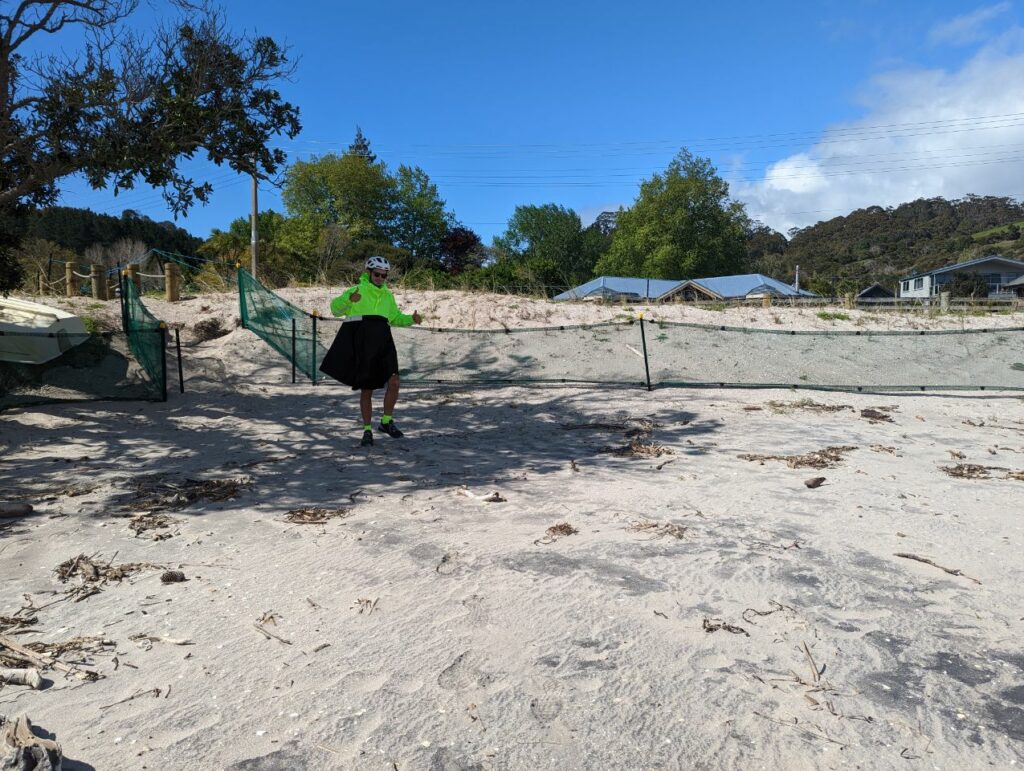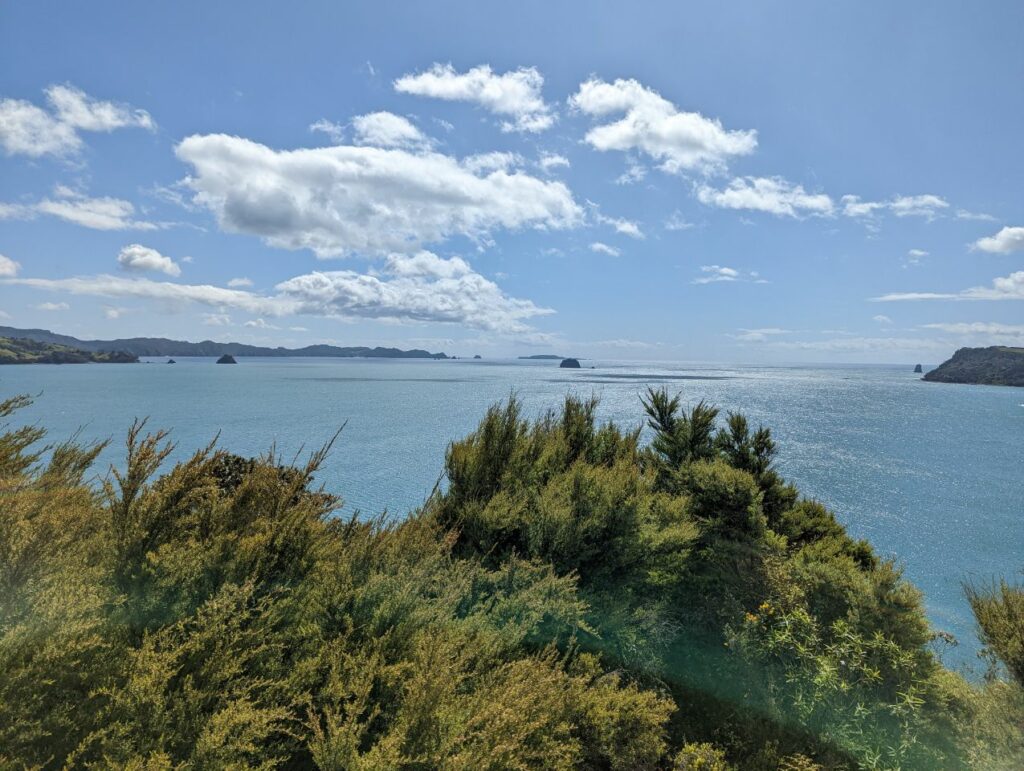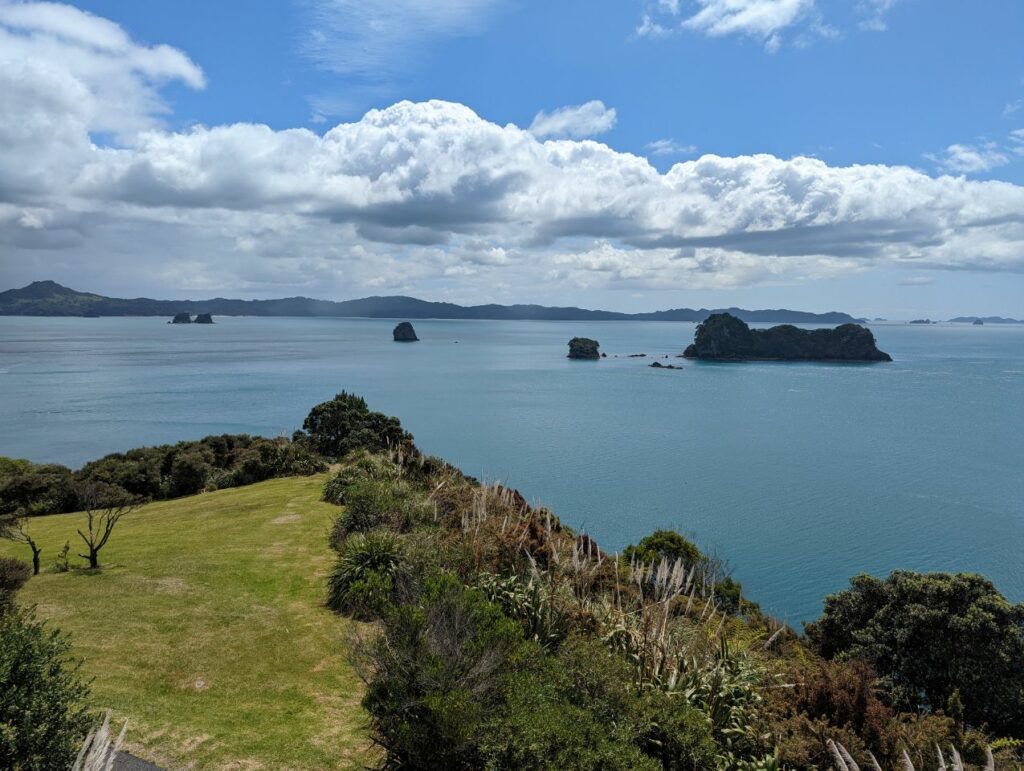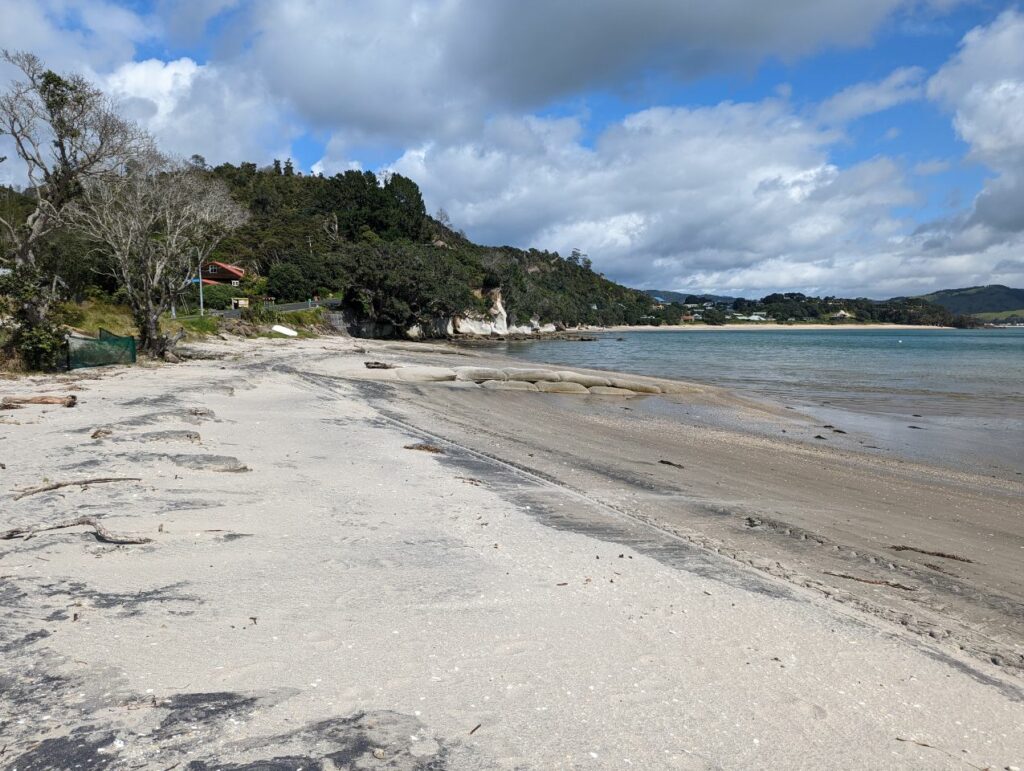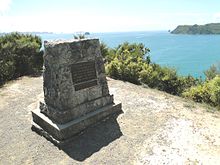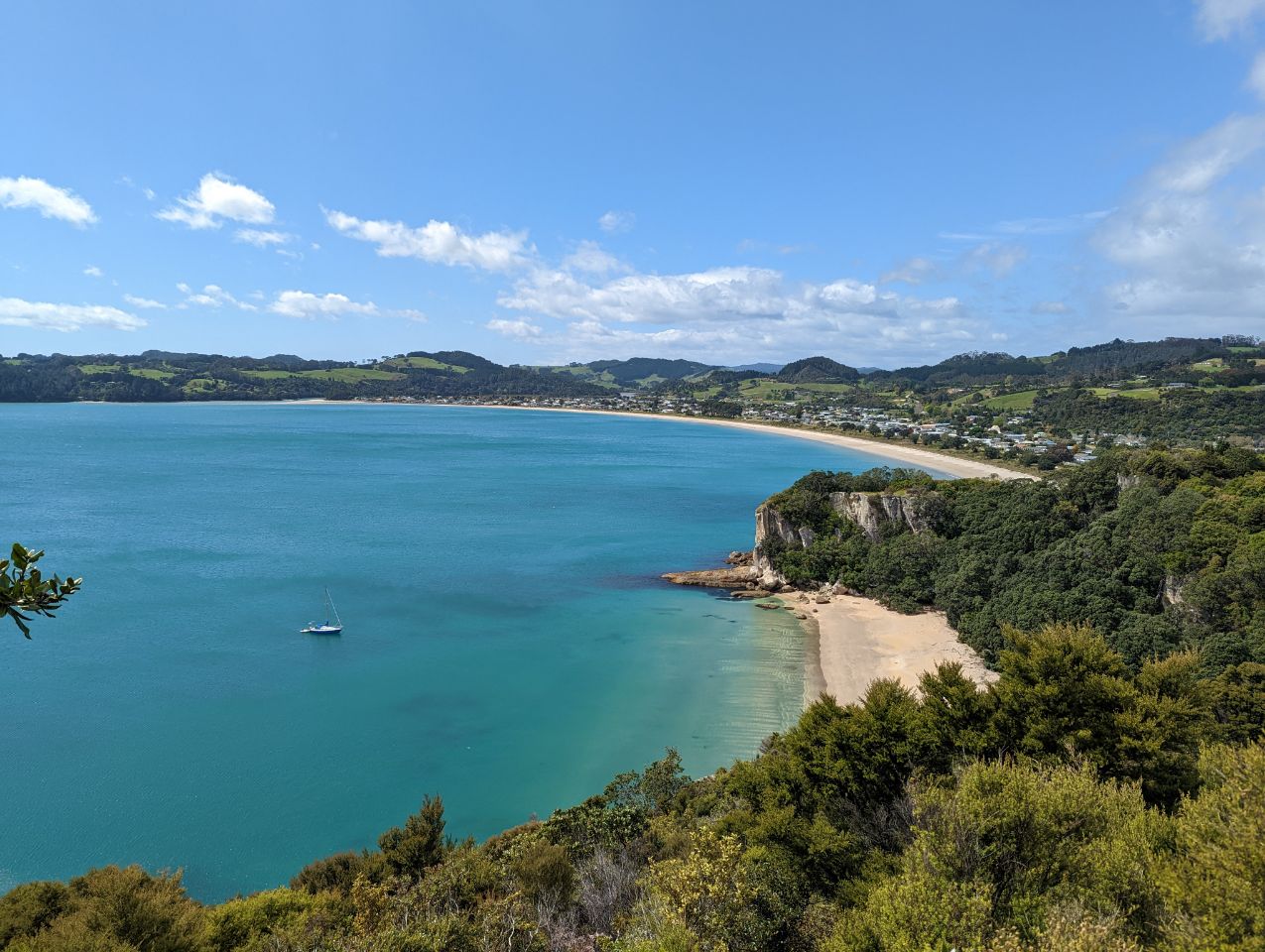
COOKS BEACH
20th of October 2022
Cooks Beach (Pukaki) is a town on a three-kilometre white-sand beach on the Coromandel Peninsula of New Zealand. To its north is Cooks Bay, and beyond that is Mercury Bay. To the east is the locality of Hahei and the tourist attraction of Cathedral Cove. Roads to the south connect to SH 25. On the northwest, Shakespeare Cliff is a scenic reserve with a lookout point.[3][4]
History
The harbour is one of the earliest places settled by Māori, with Kupe landing on the shore in the fourteenth century. Te Arawa arrived later bringing a leader called Hei, resulting in the local iwi of Ngāti Hei. The bay was called Whanganui-o-hei, the great bay of Hei.[5]
James Cook visited the area in November 1769, and chose the eastern end of Cooks Beach to set up his instruments to observe the transit of Mercury. He named the bay Mercury Bay.[6] A granite monument later set up to honour him was washed into the sea by a storm and erosion in 2018, but replaced in time for the 250th anniversary the following year.[7]
In 1837, Ranulph Dacre and Gordon Browne purchased almost all the land of Cooks Beach, which became known as Dacre’s Grant. A timber mill and a flax mill were established, and up to 30 families settled to farm, collect kauri gum, and fish. Plans to subdivide the land in the 1920s were postponed due to the Great Depression until after World War II. Farming moved into the hills, which had previously been unsuitable due to low phosphate levels, but aerial topdressing made the land economic.[8]

